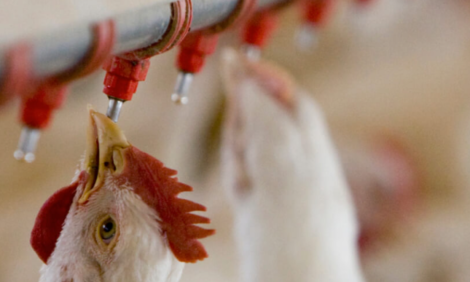



Weekly Overview: New Approaches to Welfare Assessment
ANALYSIS - From France and the US in the last week has come news of new approaches to animal welfare. INRA of France has set up an expert group to examine how pain can best be avoided or managed in food animals, and another group is being set up by US-based CAST to look at the possible impacts of proposed changes in production practices on animal health and food safety. Researchers in the UK have reported that intermittent lighting programmes benefit broiler health and well-being.France's National Institute for Agricultural Research has appointed an expert committee to review the issue of pain in food-producing farm animals.
To minimise pain, the authors developed a '3S' approach accounting for 'Suppress, Substitute and Soothe' by analogy with the '3Rs' approach of 'Reduction, Refinement and Replacement' applied in the context of animal experimentation.
The new approach considers firstly the suppression of any source of pain that brings no obvious advantage to the animals or the producers, as well as sources of pain for which potential benefits are largely exceeded by the negative effects. The second solution involves the substitution of a technique causing pain by another, less painful one. Thirdly, where pain is known to be present and cannot be avoided, systemic or local pharmacological treatments should be used to soothe pain.
A new task force has been set up to examine the relationship between animal health/welfare and food safety outcomes.
Many groups in society, including politicians, activists, scientists, and stakeholders, are advocating significant changes to livestock production practices, according to the Council for Agricultural Science and Technology (CAST).
These changes include modification to stocking densities, limitations on antimicrobial use, and requirements for outdoor 'experiences'.
Such changes may affect animal health. Simultaneously, consumers are demanding virtually risk-free food, and they think food safety should be addressed on-farm as well as during processing, without understanding the relationship between animal health and food safety.
CAST is addressing these concerns in a Commentary prepared by a 10-member task force of subject experts. They will discuss the quantifiable impact animal health has on public health risk of foodborne illness from farm products; identify the factors that impact animal health, and
highlight specific research needs.
Also on the theme of welfare, the benefits of intermittent lighting programmes on broiler well-being and performance are shown up in a Bristol University study conducted in collaboration with David Filmer and a UK broiler integrator.
The study, funded under the SPARK award scheme linking smaller enterprises with research organisations, showed significant gains in bird health and consistently improved productivity.
The risk of disease among farm animals and farm biosecurity are public issues, which makes the economic impacts of disease control and ensuring good biosecurity public concerns.
The August issue of EuroChoices, the Journal of the Agricultural Economics Society and European Association of Agricultural Economists, examines the role of economics in animal health decision making and how an economic approach can add value to animal health policies.








